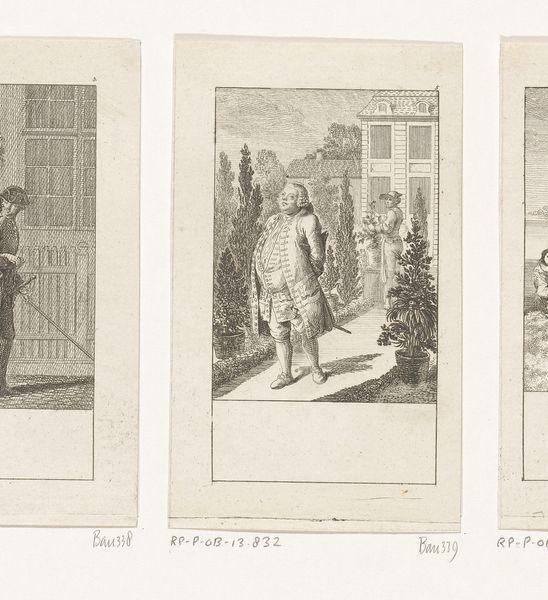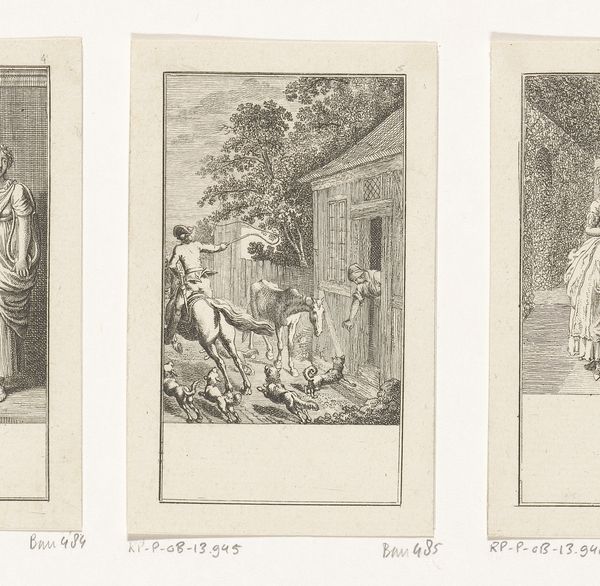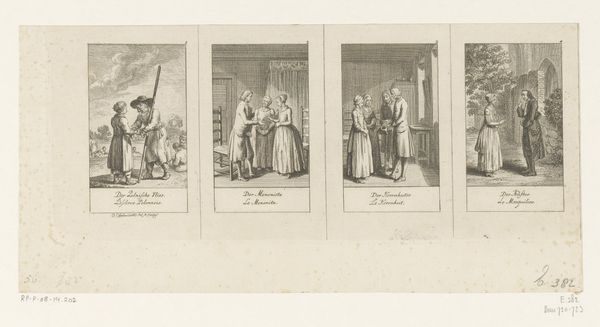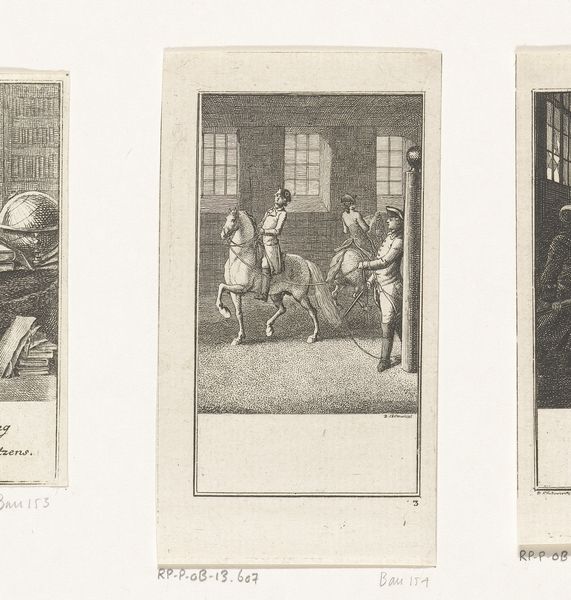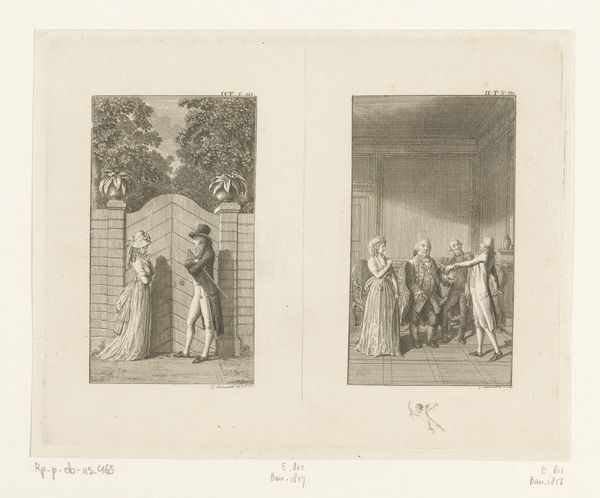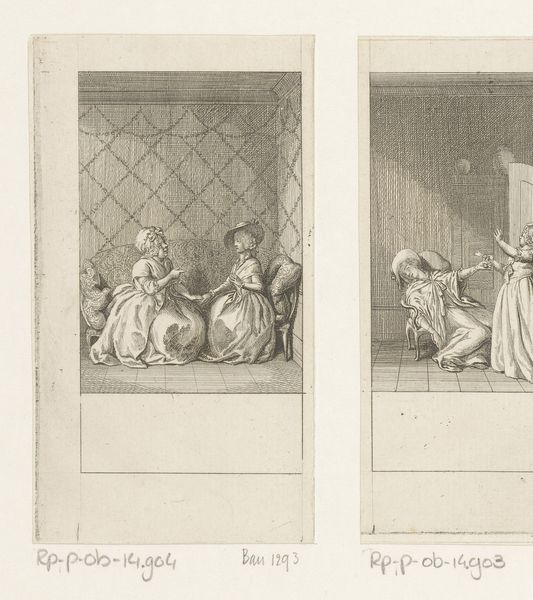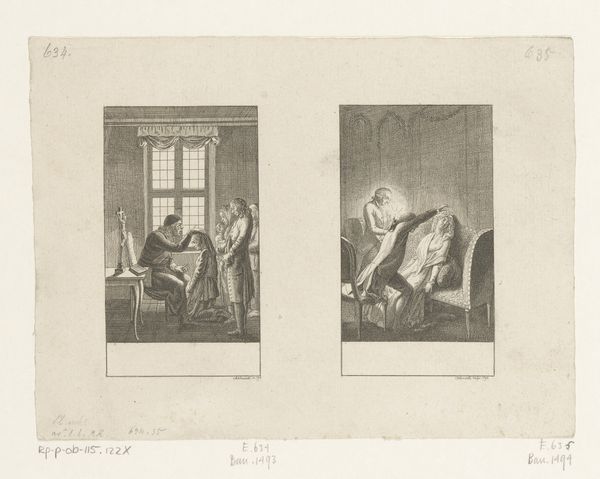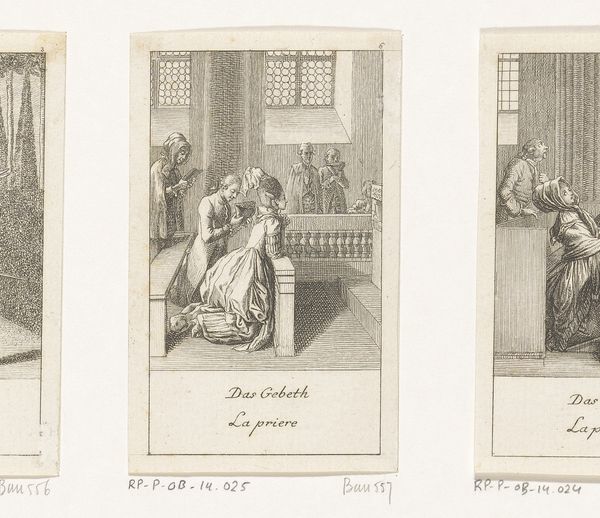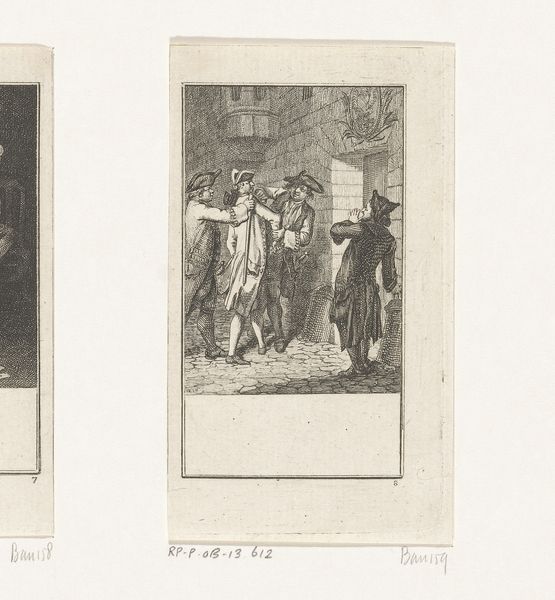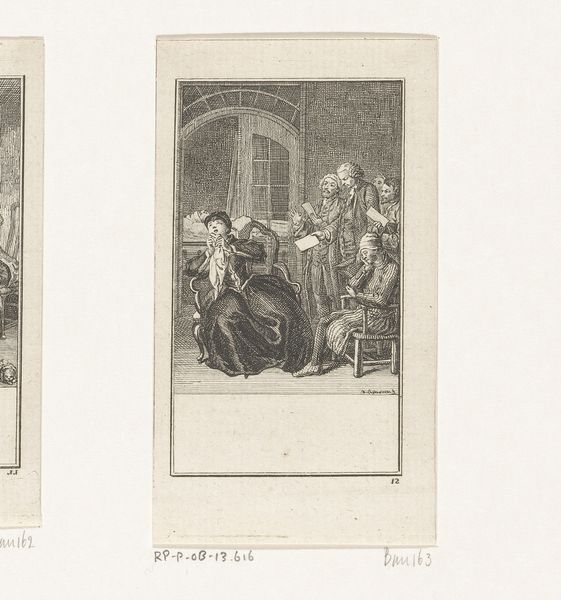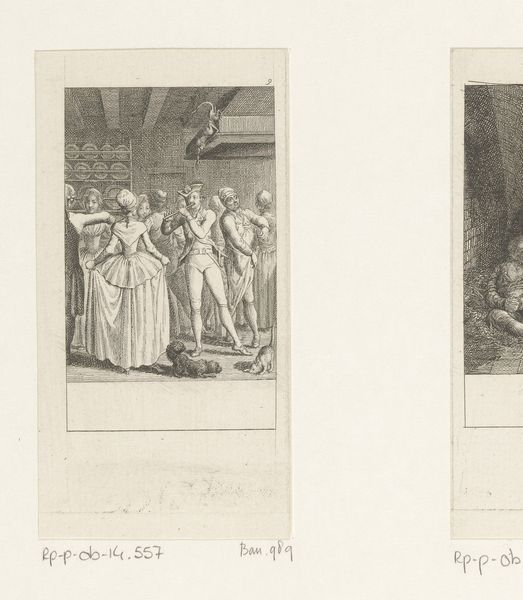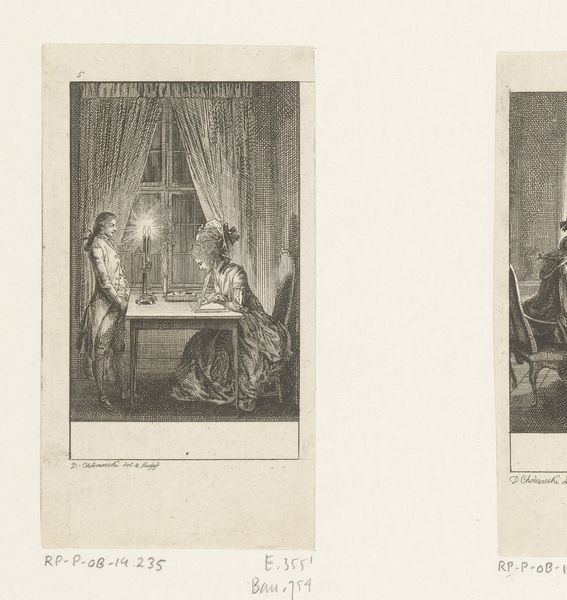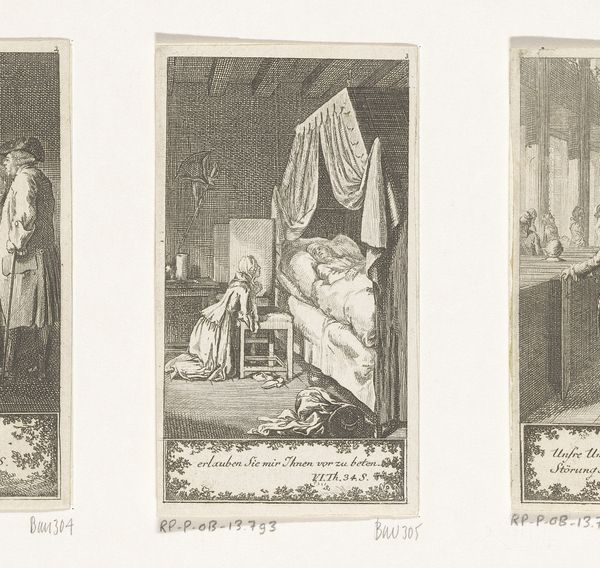
drawing, print, paper, ink, engraving
#
drawing
#
neoclassicism
#
ink paper printed
# print
#
paper
#
ink
#
genre-painting
#
history-painting
#
engraving
Dimensions: height 107 mm, width 238 mm
Copyright: Rijks Museum: Open Domain
Editor: This is "Vier scènes uit de geschiedenis van Blaise Gaulard," or "Four Scenes from the History of Blaise Gaulard" created in 1775 by Daniel Nikolaus Chodowiecki. It's an ink print on paper depicting four separate, yet connected moments. There's something almost theatrical about the compositions... a narrative unfolding. What stands out to you, especially within its historical context? Curator: The work’s charm lies in its illustration of the social theatre of the late 18th century. Chodowiecki, working during a period of intense social change and the rise of the public sphere, captures not just a personal story, but also comments on societal structures. The composition itself, divided into these distinct 'stages,' mirrors the compartmentalized existence of different social classes, doesn't it? Consider how access, literally stepping through doors in the first scene, becomes a metaphor for social mobility and its restrictions. What kind of stories do you think were deemed worthy to be printed and disseminated to the public? Editor: That's interesting, thinking about it as stages. I suppose stories reinforcing social norms or satirizing those who defied them would be popular. It's like a proto-soap opera in print! So, do you see a critique or endorsement of those norms here? Curator: Chodowiecki's position is complex. While seemingly documenting events, the very act of isolating and framing these scenes – from grand interiors to stark alleyways – prompts us to analyze the disparities within society. The formal style of Neoclassicism, with its emphasis on order and clarity, juxtaposes ironically with the messy realities of social life. Think about the power of print at that time and its ability to shape public perception. Whose stories were *not* being told? Editor: It is interesting how this format allows one to contrast these disparities and stories alongside one another. Looking at this piece now, it’s like peering into a time capsule, gaining insight into the social codes and unspoken hierarchies of the 18th century. Thank you, I'll be sure to view art with these sociopolitical and cultural filters now. Curator: Indeed. And remember, these prints weren't just art objects; they were active participants in shaping public discourse and understanding the complexities of social change. There's always so much to learn!
Comments
No comments
Be the first to comment and join the conversation on the ultimate creative platform.
